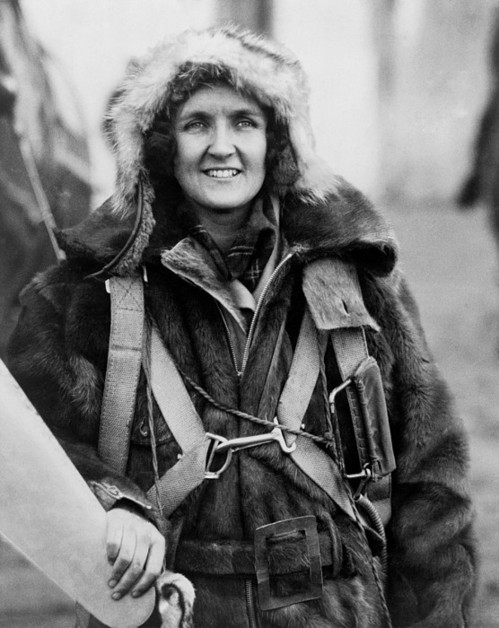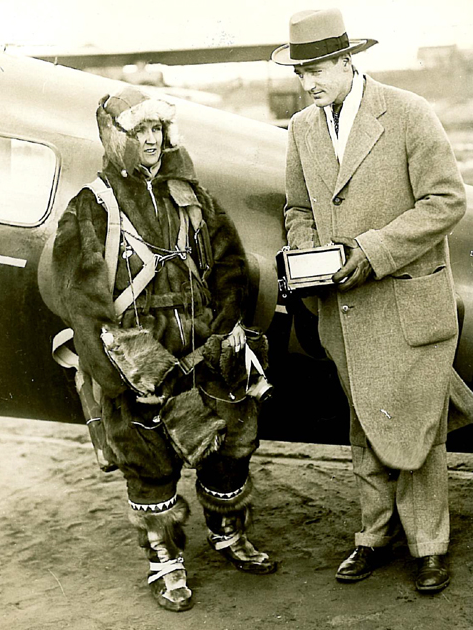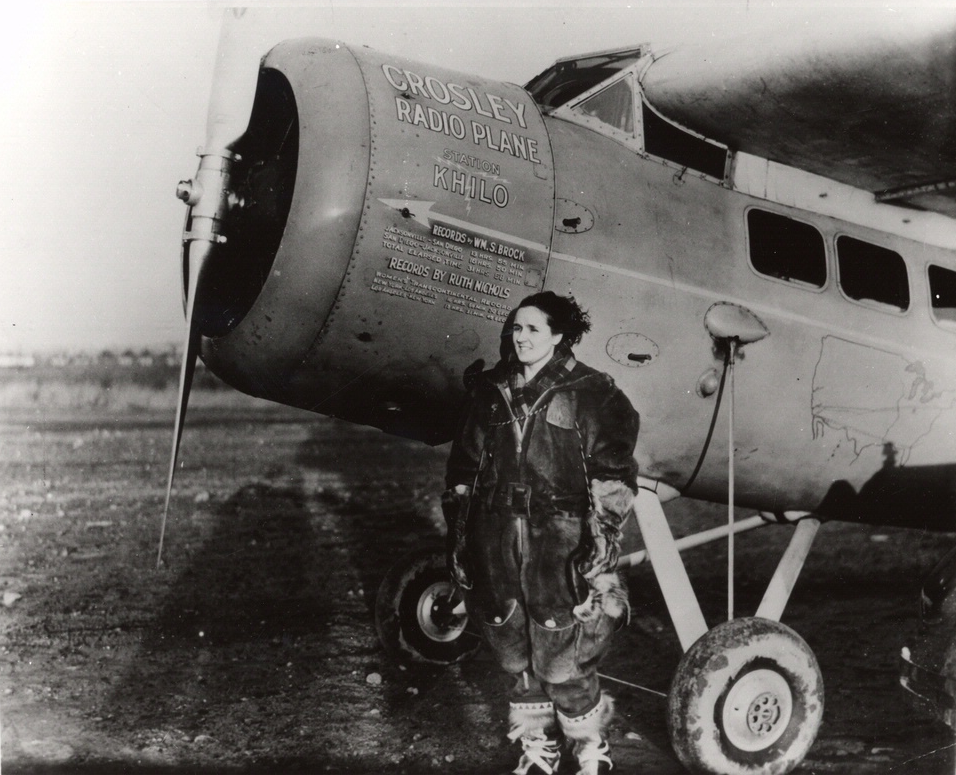
6 March 1931: Ruth Rowland Nichols set a Fédération Aéronautique Internationale (FAI) World Altitude Record of 8,761 meters (28,743 feet) at Jersey City Airport, New Jersey.¹
Nichols’ airplane was a 1928 Lockheed Model 5 Vega Special, serial number 619, registered NR496M, and owned by Powell Crosley, Jr. He had named the airplane The New Cincinnati.
Built by the Lockheed Aircraft Company, Burbank, California, the Vega was a single-engine high-wing monoplane with fixed landing gear. It was flown by a single pilot and could be configured to carry four to six passengers.
The Lockheed Vega was a very state-of-the-art aircraft for its time. The prototype flew for the first time 4 July 1927 at Mines Field, Los Angeles, California. It used a streamlined monocoque fuselage made of molded plywood. The wing and tail surfaces were fully cantilevered, requiring no bracing wires or struts to support them. The fuselage was molded laminated plywood monocoque construction and the wing was cantilevered wood.
The Model 5 Vega is 27 feet, 6 inches (8.382 meters) long with a wingspan of 41 feet (12.497 meters) and overall height of 8 feet, 2 inches (2.489 meters). Its empty weight is 2,595 pounds (1,177 kilograms) and gross weight is 4,500 pounds (2,041 kilograms).
Nichols’ airplane was powered by an air-cooled, supercharged 1,343.804-cubic-inch-displacement (22.021 liter) Pratt & Whitney Wasp C, a nine-cylinder radial engine with a compression ratio of 5.25:1. It was rated at 420 horsepower at 2,000 r.p.m. at Sea Level. The engine drove a two-bladed controllable-pitch Hamilton Standard propeller through direct drive. The Wasp C was 3 feet, 6.63 inches (1.083 meters) long, 4 feet, 3.44 inches (1.307 meters) in diameter and weighed 745 pounds (338 kilograms).

Flying the Vega, Ruth Nichols also set records for speed between New York and Los Angeles. NR496M was damaged beyond repair at Floyd Bennett Field, 11 April 1931.
“Ruth Nichols was the only woman to hold simultaneously the women’s world speed, altitude, and distance records for heavy landplanes. She soloed in a flying boat and received her pilot’s license after graduating from Wellesley College in 1924, becoming the first woman in New York to do so. Defying her parents wishes to follow the proper life of a young woman, in January 1928 she flew nonstop from New York City to Miami with Harry Rogers in a Fairchild FC-2. The publicity stunt brought Nichols fame as “The Flying Debutante” and provided headlines for Rogers’ airline too. Sherman Fairchild took note and hired Nichols as a northeast sales manager for Fairchild Aircraft and Engine Corporation. She helped to found the Long Island Aviation Country Club, an exclusive flying club and participated in the 19,312-kilometer (12,000-mile) Sportsman Air Tour to promote the establishment of clubs around the country. She was also a founder of Sportsman Pilot magazine. Nichols set several women’s records in 1931, among them a speed record of 339.0952 kph (210.704 mph), an altitude record of 8,760 meters (28,743 feet), and a nonstop distance record of 3182.638 kilometers (1,977.6 miles). Her hopes to become the first woman to fly the Atlantic Ocean were dashed by two crashes of a Lockheed Vega in 1931, in which she was severely injured, and again in 1932. In 1940, Nichols founded Relief Wings, a humanitarian air service for disaster relief that quickly became an adjunct relief service of the Civil Air Patrol (CAP) during World War II. Nichols became a lieutenant colonel in the CAP. After the war she organized a mission in support of the United Nations Children’s Fund (UNICEF) and became an advisor to the CAP on air ambulance missions. In 1958, she flew a Delta Dagger at 1,609 kph (1,000 mph) at an altitude of 15,544 meters (51,000 feet). A Hamilton variable pitch propeller (which allowed a pilot to select a climb or cruise position for the blades), from her Lockheed Vega is displayed in the Golden Age of Flight gallery. Nichols’ autobiography is titled Wings for Life.”
— Smithsonian Institution National Air and Space Museum, Women In Aviation and Space History, The Golden Age of Flight.

¹ FAI Record File Number 12228
© 2018, Bryan R. Swopes